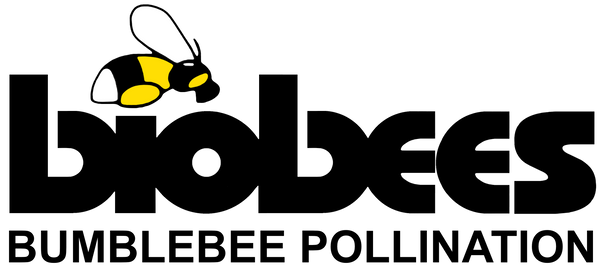Kiwifruit Pollination
Recommendations
Bumblebees are fantastic pollinators of kiwifruit, and can be used alone or in combination with honeybees!

- We recommend a minimum of 6 turbo hives per hectare when used in combination with managed honeybee hives
- We recommend a minimum of 15 turbo hives per hectare in the absence of other managed bees
- Use insulated outers for greater activity

The Biology of Kiwifruit
Kiwifruit (Actinidia deliciosa) are dioecious, meaning that they have separate male and female plants. Male plants produce flowers with a non-functioning ovary, and 134-182 stamens which release viable pollen. Female flowers have 165-200 stamens that produce sterile, non-viable pollen, and up to 41 functioning stigmas. The swollen ovary of female flowers contain up to 1500 ovules. Flowers do not produce nectar, with female flowers offering the sterile pollen as a reward to pollinators, such as bumblebees. Each female pistil requires about 3000 pollen grains to set 700 seeds per fruit, with 700-1400 seeds required for the fruit to be suitable for export. Kiwifruit vines do not flower prolifically, and 90% of the flowers must set to achieve a commercially acceptable crop. First-class pollination of kiwifruit is a must, and bumblebees are well suited to the pollination of this crop.
Male plants must be planted amongst female plants to provide viable pollen, so must bloom at the same time as the female cultivar. Male vines are often planted at a 1 : 8 ratio, with every third plant male in every third row. More male intensive configurations have been used, including 1 : 5 and 1 : 3, however, studies in New Zealand have shown that there is no increase in fruit weight or seed number when orchards are planted with 1 : 3 plant ratios compared with 1 : 8. Other option include growing male vines above the main crop, running at right angles to the main vines, or to use narrow “strip” rows of male vines running in parallel to the main vines. Both of these methods increase the chances of bees visiting male and female flowers on the same foraging trip. It has been estimated that there is a 2.3% reduction in seed number with every 1m increase between male rows.
Male plants must be planted amongst female plants to provide viable pollen, so must bloom at the same time as the female cultivar. Male vines are often planted at a 1 : 8 ratio, with every third plant male in every third row. More male intensive configurations have been used, including 1 : 5 and 1 : 3, however, studies in New Zealand have shown that there is no increase in fruit weight or seed number when orchards are planted with 1 : 3 plant ratios compared with 1 : 8. Other option include growing male vines above the main crop, running at right angles to the main vines, or to use narrow “strip” rows of male vines running in parallel to the main vines. Both of these methods increase the chances of bees visiting male and female flowers on the same foraging trip. It has been estimated that there is a 2.3% reduction in seed number with every 1m increase between male rows.
Bee Comparisons
Bumblebees make more reliable contact with the stigmas (♀) than honeybees. On average, honeybees contact 25% of the stigmas during one flower visit, while bumblebee workers contact 45% of the stigmas, and bumblebee queens contact 68% of the stigmas. While bumblebees tend to be more biased towards one sex of flower than honeybees, they spend less time working a flower and deposit more viable (male) pollen than honeybees do per female flower visit. The buzz-pollination technique employed by bumblebees is also more efficient at removing the fresh moist pollen, such as early in the morning when the anther has only recently opened (dehisced).
Using Bumblebees
We recommend that you contact us so that we can work together to come up with an effective strategy to pollinate your kiwifruit. Biobees is more than happy to work with orchardists to ensure that the pollination requirements of your crop are met, and this involves gaining an understanding of the variables that are unique to every property!
Call us at the number below, or e-mail to enquire now!
